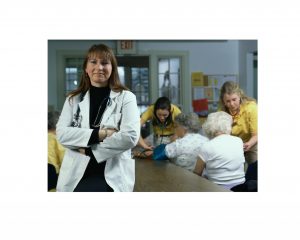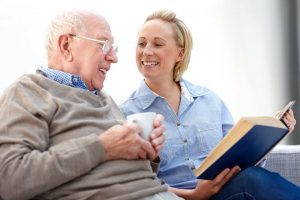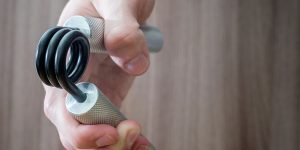Dr. Mauk’s Boomer Blog
Each week, Dr. Kristen Mauk shares thoughts relevant to Baby Boomers that are aimed to educate and amuse.
Dr. Kristen L. Mauk, PhD, DNP, RN, CRRN, GCNS-BC, GNP-BC, FAAN

Guest Blog: 5 Reasons Seniors Should Buy Organic Produce
In older age, your body needs nutrition to prevent chronic diseases and deterioration of dental, bone, and joint health. A balanced diet rich in nutrients is essential for heart health, diabetes, and preventing cognitive decline. But as we age, our ability to absorb nutrition from food decreases. And that’s why it’s even more essential to include nutritious food like fruits, vegetables, nuts, legumes, and fortified cereals.
Experts suggest that including organic food in your diet can help the elderly defend their bodies against chronic illnesses and manage any chronic illnesses they may already have. Organic food is easier to digest, doesn’t contain any harmful chemicals, and carries nutrition better than conventional produce.
What is Organic food?
Even though there is no set definition of organic food, it is described chiefly as food made from produce grown without artificial fertilizers, synthetic pesticides, or other chemicals. Organic poultry and meat products are from animals that aren’t given antibiotics or growth hormones.
When growing organic food, farmers use organic pesticides such as manure and compost. Unlike conventional produce, no chemicals are used to boost the size or to ripen organic fruits or vegetables. In many countries, the government has established strict regulations for growing organic produce. To obtain certification, organic online stores and organic product manufacturers must prove that 95% of the ingredients used to create the final product are natural.
How Organic food Keeps Many Diseases Away from the Elderly?
Senior citizens must avoid all foods that can cause side effects to their bodies. Organic food eliminates the possibility of allergic reactions or side effects due to its all-natural origins. Here are some ways in which organic food helps the elderly –
- Organic food has higher nutritional content, including vitamins and minerals. After a certain age, the body absorbs lesser nutrition from food and it is essential to eat food that offers high nutrition.
- Long-term consumption of organic food provides consistent nutrition that helps combat conditions like heart diseases, blood pressure, migraine, and diabetes.
- The absence of toxins such as chemicals, pesticides, and chemical-based fertilizers helps avoid adverse effects on health.
- Healthy organic foods strengthen the body’s immune system and improves skin and hair health.
However, to enjoy all the benefits of organic food, older people must be given food correctly, and the diet must be regulated as advised by their doctor.
Five Benefits of Including Organic produce in Your Diet
- Contains Antioxidants – Organic food contains 18 to 69% more antioxidants than conventionally grown food. Including organic food rich in antioxidants can reduce the risk of cancer, heart disease, vision problems, and cognitive malfunction. Antioxidants are essential to prevent cell damage due to age.
- Less Chance of Food Related Illness – Conventional food may contain pesticides, chemicals, and in the case of meat – even hormones. Such substances may contaminate food, making it unfit for consumption. Such food may cause food-poisoning or other complications in anyone who eats it. Consuming contaminated food is harmful to everyone, especially senior citizens.
- Stronger Immunity – Organic produce grown naturally is rich in vitamins and minerals that boost immunity in humans. Conventional food is grown with chemicals to enhance the quantity of the food while lowering costs. There are many ways to boost immunity and consuming organic foods to boost immune system. It is free from chemicals and naturally enriched with nutrients that build immunity.
- Zero Percent Pesticide Content – Chemical pesticides in conventional produce can slowly erode the body’s natural immunity and strength. Organic food contains zero pesticides and can be consumed worry-free by young children, adults, and senior citizens. Regular consumption of non-organic food can lead to lifestyle diseases, life-threatening diseases, and chronic illnesses.
- Better Taste – When fruits and vegetables are injected with antibiotics or chemicals to help them ripen faster, it adversely affects the taste and aroma of the produce. Organic food is grown with a 100% natural process that preserves the natural taste, texture, and aroma of fruits and vegetables. Even though growing organic fruits and vegetables take longer, the final product tastes much better.
Research has shown that organic food is a healthier, tastier, and safer choice for people of all ages. Various factors are considered when growing organic food, such as soil fertility, the timing of beginning the growth process, irrigation, and manure to fertilize the plants must adhere to a standard of purity. For senior citizens, diet is an essential part of healthcare. By choosing an organic diet, they can ensure they receive the nutrition and care they need at an advanced age.
Author Bio:
Kunal Tambe is part of the content marketing team at Two Brothers Organic Farms. With his team, he works tirelessly to create awareness about organic farming, food sovereignty, sustainable practices, nutrition, climate change and a myriad of issues that surround these topics. His content offers value to farmers, the agriculture industry and to end consumers. Besides writing and developing content strategies, he loves adventure sports and listening to classical music.
Medicine Cabinet Spring Cleaning Reminders for Seniors
Are you tending to your ever-growing spring cleaning checklist? If you don’t have “clean out the medicine cabinet” as one of your ToDos, add it today and don’t forget these important reminders:
Dispose of Old Medicine
Unused prescriptions, expired over-the-counter drugs, empty boxes, and bottles . . . it’s easy for a medicine cabinet to become cluttered over the year with superfluous items. Take some time this spring to clear it out and safely dispose of the medicine you no longer use.
- Check expiration dates and recycle old medicine boxes and bottles (remove prescription labels before you toss them or mark out private information)Follow instructions for disposing of medicine or check with your local pharmacy or law enforcement agency about upcoming drug take-back events
Simplify your daily medicine schedule by sorting pills into color-coded pill organizers with day of the week and time of day compartments
Upgrade Home Health Items
As you get older, is your doctor recommending you check health metrics at home more regularly like blood pressure, temperature, or blood sugar? Having handy, reliable home health tools to gather and record important health data could play a significant role in helping you manage a chronic illness, prevent infection, and be alerted when something seems off. Don’t forget to check that these tools are in working order:
- An accurate thermometer to check one’s temperature regularly
A reliable blood pressure monitor with memory for recording readings
A blood sugar monitor with strips (especially if you are one of the 25% of adults over 65 with diabetes)
A pulse oximeter (if you have frequent respiratory infections or heart disease)
Update Medical ID
Did you know that most smartphones offer you the ability to store important medical ID information in the event of an emergency? Simply find the Health app or Medical ID feature in the settings on your phone and input important information like birth date, known medical conditions, allergies, blood type, and emergency contact numbers.
If first responders are unable to get this information from you at the scene of an accident, they are now trained to check your smartphone. Medical ID information can be accessed from the lock screen of most smartphones without having to enter a passcode.
Don’t forget to check the stock on your first aid kit – refilling items like band-aids, wound solution, NSAIDs, cold compresses, antibiotic cream, sterile gauze, and elastic bandages could come in handy during your summer adventures.
Guest Blog: Healthcare tools and technology that help seniors continue to live at home
Advanced technologies in the healthcare niche such as GPS, motion-sensors and social networks that are senior focused might help seniors keep living comfortable in their homes. Medicaid and Medicare – two of the most powerful government agencies in the US – are aiming to develop cost efficient alternatives for nursing homes and assisted living facilities. Many tech-savvy families wish for their loved ones to live nearby and thus be able to balance their personal lifestyles with caregiving. Fortunately, technology is here to help.
General costs for assisted living and nursing home care keep increasing. The rates are incredibly high, whereas the general cost of at-home senior care has boosted with less than 1% in the last 5 years. At a national scale, the median cost for nursing homes increased to roughly $85,000 in 2013 as opposed to $63,000 in 2012. Furthermore, nearly 90% of citizens in the US wish to live alone in their homes rather than be placed in an assisted living facility.
Advanced technology makes caregiving a lot easier
Even though IoT (the internet of things), mobile devices, analytics, big data and cloud-based services allow nearly every age category to make use of technology for improved health, it is it is quite obvious that seniors can also reap benefits. That’s certainly good news since people with ages above 65 (41 million in the US), will represent one fifth of US’s population by 2050. By then, the US will have 19 million people above 85. If the country chooses to start using advanced technology now, things will look pretty good in 35 years when the lifestyle of the average senior will be pretty comfortable and laid-back.
Seniors are concerned about their financial, emotional and physical safety
A lot of seniors today fear for their financial, physical and emotional safety. They’re often aware that if their loved ones live nearby, they’ll somehow be compelled to look after them. Fortunately, technology comes to the rescue and eases the job of an adult to take care of his/her aging parent. Family members will be relieved of the burden because savvy gadgets and remote devices allow them to keep a close eye on their loved ones without having to check on them every single day. Experts agree that if more seniors would be open to using advanced technology, they could enjoy a much comfortable lifestyle by themselves.
However, let’s not forget that today’s seniors didn’t grow up tech-savvy. This means that they might feel uncomfortable using technology; because of this developers must consider crafting gadgets that are efficient but also easy to use. Twenty years from now seniors will probably use gadgets just as well as youngsters; but before that happens, the following should be checked out.
- Sensors – advanced patient monitoring. These devices can easily be installed around the house. They send signals alerting caregivers of prospective falls, injuries or skipped meals
- GPS tracking technology – excellent for keeping track of a loved one’s whereabouts.
- Apps – there’s a range of apps you can use to keep an eye on an aging parent. Both communication and monitoring apps are tools caregivers can use to watch over their loved ones. Among some of the most well-known we should mention Philips Lifeline, TrackerAssist, Red Panic Button and 5Star Service.
- Remote monitoring tools – these are targeted at seniors needing regular monitoring. There are lot of devices nowadays that monitor blood glucose, heart rate and blood pressure.
- Telehealth – the ability of modern telehealth systems is to use standard video-conferencing and phone systems to connect senior patients with nurse practitioners, physicians and mental health specialists. Furthermore, recent research highlights some pretty advanced technologies; these are meant to change the way seniors get regular checkups.
Seniors have realistic chances of living comfortably in their homes in spite of their health issues. Advanced technology can help them. The tools currently available are quite useful and innovative; however, caregivers must teach them how to use them. Very few seniors find residential care homes and assisted living facilities a viable lifestyle alternative. They don’t want to leave the comfort of their homes, but they’re quite aware that they can’t do everything alone either.
Guest Blog: Four Portable Exercise Tools to Take on Your Next Trip
Are you always on the go?
Whether you’re visiting grandchildren or traveling for work, it can be difficult to fit workouts in while traveling, especially if you’re staying in hotels that have limited or no exercise equipment available.
That being said, there’s no excuse not to exercise while traveling.
These four portable exercise tools are lightweight and easy to pack. Take them with you and squeeze in a workout no matter where you’re staying.
1. Resistance Bands
Resistance bands are great for fitting in strength training workouts. Use them in your hotel room or take them outside.
The best way to use resistance bands is to set up a full-body circuit to keep your heart rate elevated as you work a variety of muscle groups. Focus on compound movements like squats, rows, and overhead presses to get the most bang for your buck.
2. Yoga Mat
Sitting on a plane or in a car really takes a toll on your muscles and joints.
To counteract the stiffness that often comes with traveling, bring a yoga mat with you and do some stretches every day.
Want to stretch but don’t know where to start? Try focusing on your legs or lower back first. They typically take a beating during long trips.
If you’re really lost, you can always find yoga or stretching tutorials online, too.
3. Ab Wheel
An ab wheel obviously works your core, but it also can tone your arms, chest, and shoulders at the same time.
Ab wheels take up very little space in a suitcase, and they’re easy to use even in the smallest of hotel rooms. Give one a try during your next trip!
4. Hand Exercise Tool
If you want a truly balanced physique, don’t neglect your hands and forearms! Training these small muscles also improves your overall strength, and they can also help relieve pain stiffness caused by arthritis or carpal tunnel syndrome.
Tools like exercise putty and grip trainers are small and lightweight, and they can help you sneak in your workouts anytime, anywhere. You can even use them while you’re on a plane or in a taxi!
Frequent travel isn’t an excuse to slack on your workouts. Just get creative. Pick up one (or more) of these exercise tools today to easily fit in a sweat session no matter where you are.
5 tips for making an elderly relative’s home more accessible
 Within the next ten years, the number of people and families with elderly relatives to care for is likely to exponentially increase, with the old in some Western populations actually likely to outnumber the young by the early 2020s. This means that more and more families will have to make long-term plans to care for a relative into old age. The added pressure of a rising elderly population will manifest itself in more money needed for public and social care provision.
Within the next ten years, the number of people and families with elderly relatives to care for is likely to exponentially increase, with the old in some Western populations actually likely to outnumber the young by the early 2020s. This means that more and more families will have to make long-term plans to care for a relative into old age. The added pressure of a rising elderly population will manifest itself in more money needed for public and social care provision.
In order to both save money and (more importantly) provide a more comfortable and enjoyable experience for our elderly loved ones who are in need of social care, it’s going to be necessary to make more provisions for our older friends and relatives to be cared for in their home.
There are a number of different types of accessibility alterations which may be required if your elderly loved one suddenly has difficulty getting around the house. These include:
• Help accessing a home (e.g. ramps or hand rails when approaching the front door).
• Help getting around a home (e.g. ramps, stair lifts, more grab rails and handles for getting up and down stairs/ in and out of rooms.)
• Help with mobility in the kitchen and bathroom.
• Help with visibility/poor vision in the home
• Alarm/warning systems in the event of an accident or fall.
These are the main types of obstacles which an elderly relative may face as they deal with the difficult challenges and lifestyle alterations caused by decreased mobility in old age. Below are 5 of the most useful tips which could make all the difference, and hopefully ensure that your elderly friend or family member lives a much happier and fulfilled life.
1. Move the essentials downstairs
Moving all the essential facilities in your house to the ground floor can be the simplest way to improve overall access and ease any potential mobility issues which an elderly loved one may face. If there’s a way of suitably renovating the house so that there’s access to a bedroom, dining area and living quarters on the ground floor, then this will minimize the risk of any trips, falls, emergencies or accidents.
The decision to move all the major facilities/core rooms in a home to one floor may form part of a wider conversation about whether an elderly relative may wish to downsize to a bungalow, or a house with easier accessibility built in to the design.
2. Make bathrooms easier to use
Bathing and washing are the most private and essential of daily rituals, and a person’s ability to bathe and wash safely and easily is arguably central to their sense of dignity and self-esteem. This means that accessibility improvements to a bathroom are arguably some of the most urgent alterations you can/should be making to a home.
Helpful structural changes to a bathroom include:
• Level access/walk in showers, ensuring that an elderly person doesn’t have any immediate trip hazards, and minimising the risk of falls as they get in or out of the bath/shower.
• Handrails mounted to the walls, should an elderly relative require help getting up off the toilet.
• Removing any other extraneous trip hazards, such as bath mats or even ripping up tiled surfaces which may inadvertently mean a person could slip or trip when the surface becomes wet.
3. Stair/wheel chair lifts
These can be an essential addition to any household and are once again an invaluable tool for minimising trips and falls. If your elderly friend or loved one is adamant that they don’t want to make too many major changes to their day-to-day lifestyle and want to keep their room layout broadly the same, then a chair lift can be a great way to maintain both continuity and guarantee safety. Installation and maintenance are increasingly simple.
4. Replacing household accessories
By this, we mean replace everyday household accessories which control the day-to-day operation of the house. These include light switches and door handles. Switching your existing light switches to touch lights or dimmer switches can give an elderly relative an opportunity to take advantage of more subtle lighting states, which is especially useful if they are partially sighted/having difficulty seeing in darker rooms. Likewise, replacing any door knobs with lever handles is an easy way to ensure that your elderly relative can enjoy easier mobility when moving between rooms.
Likewise, re-arranging kitchen drawers and storage to make it more easily accessible is another straightforward way of improving accessibility and minimizing risk.
5. Installing a personal alarm system
This may be a source of understandable reluctance for someone who may be having to confront problems with mobility. After all, conceding that you need some of kind of emergency back-up system can, in turn, feel like an admission of vulnerability, and preparing for a worst-case scenario that none of us want to think about as we get older.
Nevertheless, installing a personal alarm system in the event of any serious accident or fall is a vital last line of defense in ensuring that your elderly relative or loved one is safe and secure in their own home.
A number of telecare systems allow a homeowner to alert a carer or member of the emergency services should they find themselves falling victim to a trip, fall or major accident.
Encore Care Homes offer care homes across the south of England. Their private homes offer palliative care, short-term respite care, long-term residential, and nursing care.




